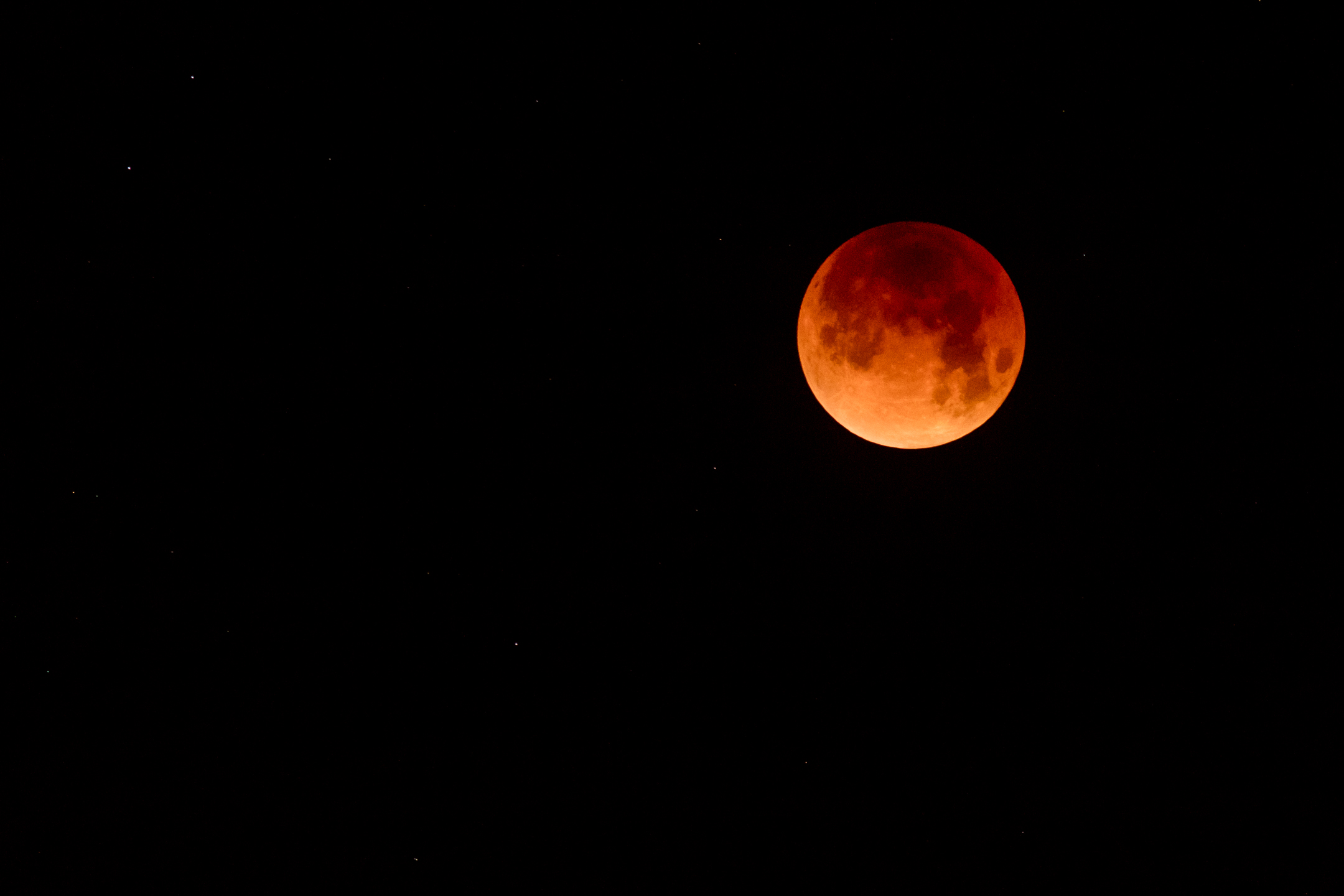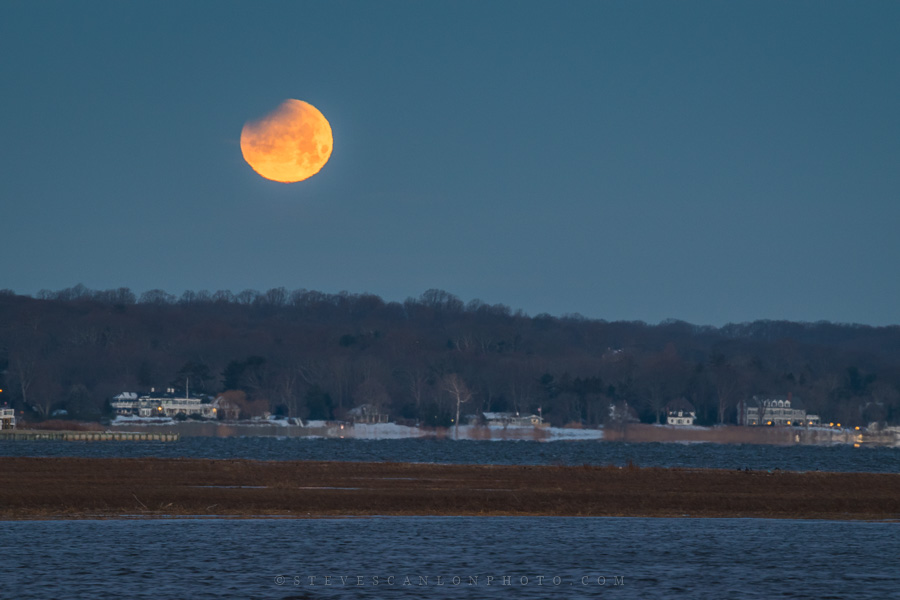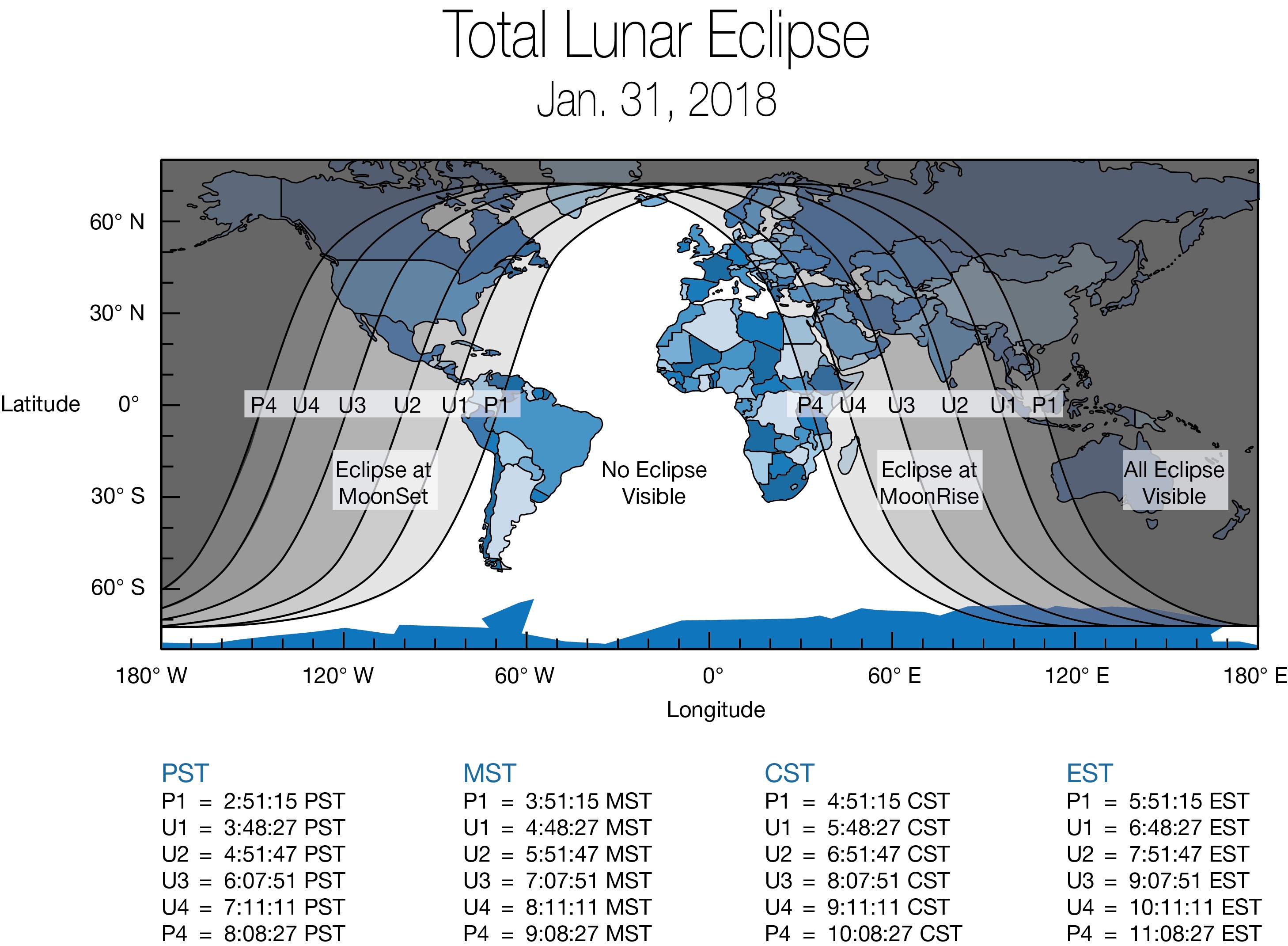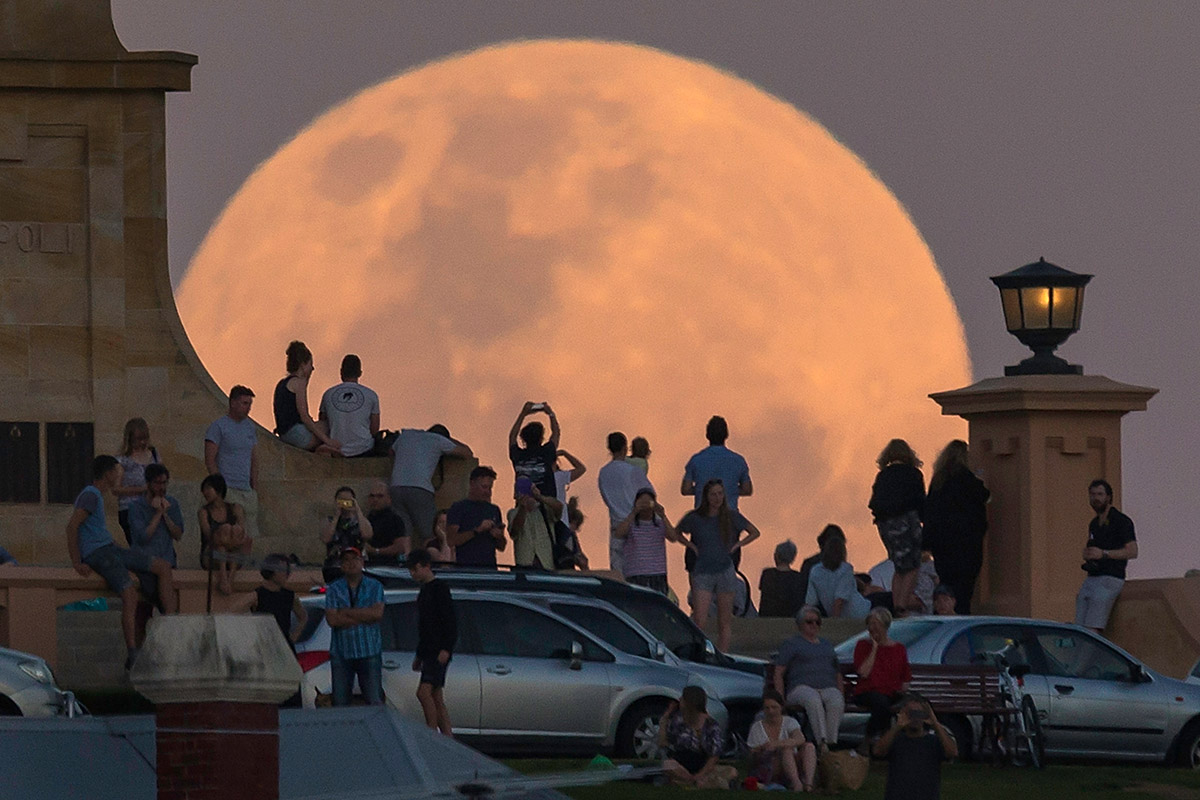The Blood Moon Rises Once Again Botw 2018
Super Blue Blood Moon 2018: Hither Are The Best Photos and Videos
The rare Super Blue Blood Moon is in the tape books and what an upshot it was.
Read our wrap story here well-nigh the run across-upward of a Blue Moon, supermoon and total lunar eclipse. See more reader photos hither! Information technology was the first total lunar eclipse since 2015 and the offset Bluish Moon Blood Moon visible from the U.Southward. since 1866! Run into our video highlight reel above and read for more astonishing photos, and details on what made the outcome and so special.
Did yous miss it? Don't worry, here's when the next Blood Moon lunar eclipses will occur through 2019!
The Near Amazing Super Blueish Claret Moon Photos
See Videos and Images on Social Media
Teach Your Kids about the Super Blueish Blood Moon!
Editor's notation:If you capture an amazing photo or video of the Jan. 31 full lunar eclipse and would like to share it with Space.com for a story or gallery, send images and comments to: spacephotos@space.com. Here are just a few amazing views sent in past Infinite.com readers:


Videos
Astrophotographer Victor Rogus captured this stunning view of the moon setting in Florida, just as the eclipse was starting to get underway.
In Los Angeles, the iconic Griffith Observatory livestreamed the lunar eclipse and opened its doors to spectactors despite the pre-dawn timing of the issue. The result: a truly unique view of the angelic event.
Updates
Blue Moon
![Thought to be called "blue" after an old english term meaning "betrayer," a Blue Moon is an extra full moon that occurs due to a quirk of the calendar. [See the full Blue Moon Infographic here.]](https://cdn.mos.cms.futurecdn.net/HHbm7kUWUR8zaAccXs7kqg.jpg)
A Bluish Moon is when ii full moons happen in the same calendar month; lunar eclipses occur when the moon passes into World's shadow; and supermoons happen when the moon'due south perigee — its closest arroyo to Earth in a single orbit — coincides with a full moon. In this case, the supermoon also happens to exist the day of the lunar eclipse.
The get-go full moon of January occurred on the night of Jan. one or the forenoon of Jan. ii, depending on your location.You can see our full coverage of that event here:
Biggest Total Moon of 2018 Shines in Spectacular New Twelvemonth's Photos
The second full moon and the lunar eclipse will occur on the night of Jan. 31 or the morn of February. 1. And the supermoon will take place on the night of Jan. 30, which is technically i day before the moon reaches pinnacle fullness, only even NASA is willing to telephone call the consequence a supermoon nonetheless. [How to Photograph the Supermoon: NASA Pro Shares His Tips]
On Jan. 31, not every place on Earth will see the Blue Moon this month, because the 2nd full moon of January won't technically appear in those places until Feb. 1. These places include regions in east asia and eastern Australia, where skywatchers won't see the showtime full moon until January. two and the next full moon until the forenoon of Feb. 1. For case, in Melbourne, Commonwealth of australia, the full moon arrives on Jan. 2 at ane:24 p.m. local time, and the adjacent full moon is on Feb. 1 at 1:26 a.thou., so skywatchers volition technically miss the Bluish Moon by less than 2 hours.
But their swain Aussies in Perth, in the southwestern part of the country, volition get 1, since the starting time total moon occurs on Jan. 2 at 10:24 a.m. local time, so the moon volition nevertheless look quite total when it rises at seven:35 p.m. On Jan. 31, the moon rises at 7:09 p.yard. and reaches fullness at 9:26 p.chiliad.
Blue Moons are non as rare as the one-time saying "once in a blue moon" implies; they happen about once every two.7 years, considering the number of days in a lunation (new moon to new moon) is a bit less than the usual calendar month — 29.53 days as opposed to 31 or 30 days (except for February, which has 28 days, so a blueish moon cannot occur). A sequence of 12 lunations adds up to 354.36 days, confronting the 365.24 days in a year. The discrepancy adds upwards over time, until a year will accept 13 lunations as opposed to 12. For some observers, 2018 volition feature ii Blue Moons — one in Jan and one in March (with no full moon in February).

Supermoon and lunar eclipse
The real star of the show for moon watchers is the lunar eclipse on Jan. 31. The supermoon (when the moon reaches its closest point to World in this orbit) volition be the twenty-four hour period before, on Jan. 30 at 4:58 a.m. EST (0958 GMT). The moon will exist 223,068 miles (358,994 kilometers) from World, compared to the average altitude of 238,855 miles (384,400 km), according to NASA.
Though a supermoon does announced slightly larger in the sky than a full moon that takes place when World's lunar companion is farther away from us in its orbit, the deviation is nearly impossible for most skywatchers to notice because the moon is so bright and the maximum possible difference in the moon'southward apparent size is modest (only about 14 percent), according to NASA.
Dissimilar solar eclipses, which are only visible from specific places on Globe, lunar eclipses are visible from anywhere it is night. Lunar eclipses don't occur every calendar month because the plane of the lunar orbit is slightly tilted relative to the aeroplane of the Earth's orbit, so the Earth, sun and moon don't ever line up to put the moon in Earth's shadow. For the Jan. 31 lunar eclipse, viewers in some places will non exist able to see the unabridged event because information technology starts near moonrise or moonset. Lunar eclipses are simply visible on Earth'southward night side.
Observers in New York Metropolis will see the moon enter Earth'south penumbra (the lighter, outer part of its shadow) at five:51 a.grand. on Jan. 31. The penumbra darkens the moon only a little; unless you're especially keen eyed, it is often difficult to detect. The moon will touch the umbra, the darker role of the shadow that gives the eclipse the distinctive look of darkening and reddening the moon, at 6:48 a.thousand. local time. But the moon sets only 16 minutes later, and so New Yorkers will get to run into only the kickoff role of the eclipse. To see as much of the eclipse equally possible, you lot'll want to exist near a apartment western horizon.
The situation gets better as y'all movement west. Chicagoans will see the penumbra touch the moon at 4:51 a.m. local time, and information technology will still be a good 26.seven degrees above the horizon (nearly 53 times the apparent width of the full moon). The umbral eclipse will start at 5:48 a.m. local time, and past 6:16a.chiliad., the moon will accept on its feature blood-red colour as information technology enters totality. Even so, it will prepare but minutes later, at 7:03 a.m., just as the lord's day rises.

In Denver and points west, the eclipse will get-go at 3:51 a.thousand. local time, with the umbra reaching the moon'south edge at 4:48 a.m. The point of maximum eclipse, when the moon is deepest in the shadow of the Earth, will occur at half-dozen:29 a.yard. For the Mile-High City, the moon will ready after the lunar eclipse ends at 7:07 a.grand. local time, when the moon exits the umbra. Moonset will follow at 7:10 a.k.
Californians will have a ameliorate view of the end of totality, as the penumbral eclipse will start at 2:51 a.m. local time, and the partial eclipse volition begin at iii:48 a.yard. At 4:51 a.m. local fourth dimension, the full phase will start, ending at 5:29 a.grand. Totality will cease at half-dozen:07 a.m., and the moon will sally from the umbra at seven:xi a.grand. The penumbral shadow volition laissez passer after the moon is merely beneath the horizon.
As one travels west across the Pacific, the lunar eclipse will occur before in the night; skywatchers in Hawaii will be able to see the entire thing from start to end, as will Alaskans and viewers in east asia and Commonwealth of australia. On January. 31, people in Tokyo will see the lunar eclipse's penumbral phase start at 7:51 p.g. local time. The umbra will touch the moon at 8:48 p.one thousand., and the maximum eclipse will be at 10:29 p.m. At 11:07 p.m., the moon will achieve the opposite side of the umbra, and at 12:11 a.m. on Feb. i, it will emerge and enter the penumbra. At 1:08 a.m., the eclipse volition end for viewers in Tokyo.
People in eastern Europe and western Asia will see something like a mirror image of the eclipse that observers in the Americas volition see, because instead of occurring nearly moonset, the eclipse will first before the moon rises.
Viewers in Moscow volition see the moon brand a dramatic entrance as it rises while it is still red and deep in Globe's shadow. Moonrise at that place is at 5:01 p.yard. local fourth dimension on Jan. 31, and the moon will reach the border of the umbra at 5:07 p.g. The moon will emerge from the dark office of Earth's shadow at 6:07 p.m. In New Delhi, the moon will rise at 5:55 p.m. local time and will be fully covered by the umbra at half-dozen:21 p.m., then information technology will turn cherry just as it reaches nigh a half a manus's width above the eastern horizon.

You can follow Infinite.com on Twitter @Spacedotcom . We're as well on Facebook & Google+ .
Join our Space Forums to keep talking space on the latest missions, night sky and more! And if you have a news tip, correction or comment, let u.s. know at: community@space.com.
Source: https://www.space.com/39208-super-blue-blood-moon-guide.html

0 Response to "The Blood Moon Rises Once Again Botw 2018"
Post a Comment